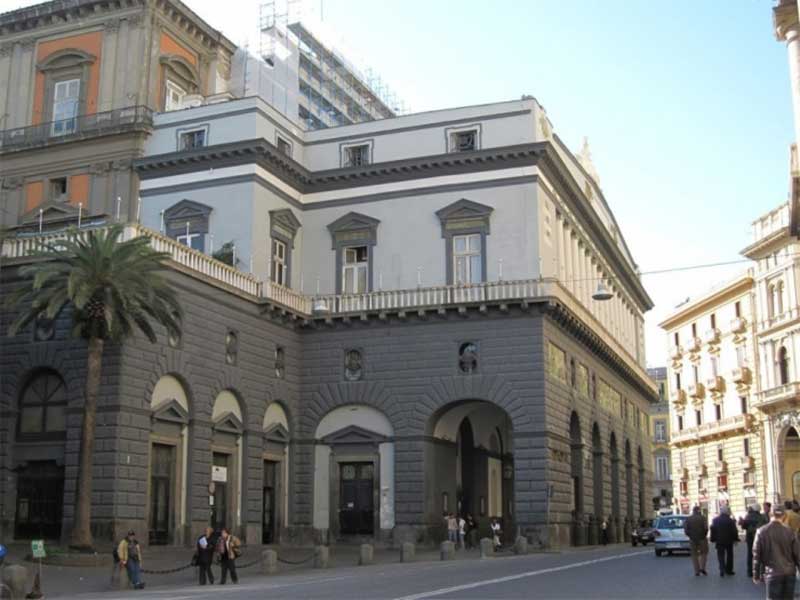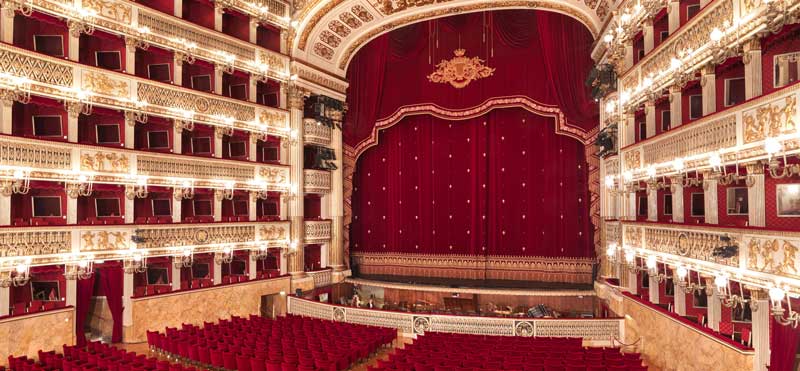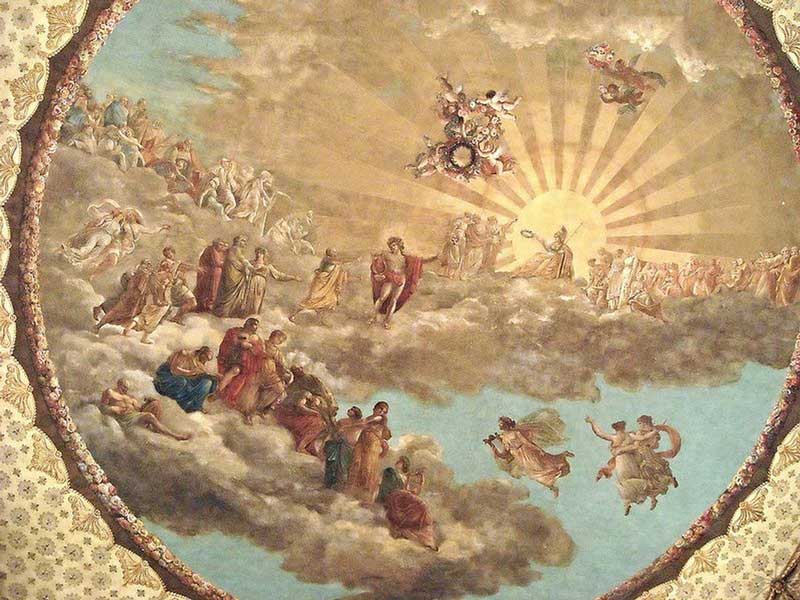
Located adjacent to the Piazze del Plebiscito, a large public square in central Naples, the Real Teatro San Carlo, popularly known simply as Teatro di San Carlo, is the oldest continuously active venue for opera in the world. Opened in 1737, it precedes 41 years before the La Scala in Milan and 51 years before the La Fenice in Venice. Opera is one of Europe's most important artistic traditions and one of the oldest still-active musical art forms in Western civilization. Teatro di San Carlo Opera House, which has watched over Naples for nearly 300 years, is regarded as the guardian of the city’s true Italian pizza and it is the home to one of the greatest architectural monuments to one of Italy's favourite art forms.
For its structure, capacity and antiquity, it was the model for many other theatres that were later built in Europe. In line with the other great architectural works of the period, such as the large Bourbon palaces, the grand old opera house is reckoned one of the iconic symbols of Naples.

Teatro di San Carlo was commissioned by Charles III, King of Spain of the Bourbon dynasty, who conquered the kingdoms of Sicily and Naples in 1734 and ruled till 1759. As the new king, Charles wanted to highlight his image as a sophisticated, intellectual and generous ruler and as he was aware of the importance of opera in Italy and art centres were treated as a gift to the commoners, he decided to endow Naples with an august opera house.
Accordingly, for the construction of a new and larger theatre to replace the old, dilapidated and rather small Teatro San Bartolomeo of 1621, he engaged the Spanish military architect Colonel Brigadier Giovanni Antonio Medrano. He designed a grand hall, measuring 94 X 74 feet (28.65 X 22.5 m), equipped with 184 boxes distributed in six tiers and a Royal box for ten people, accommodating almost 1739 seats. The work was contracted to Angelo Carasale who completed the project in about eight months at a cost of over 75.000 ducats, according to contemporary accounts.

The structure of the Teatro di San Carlo is a classic example of Italian Neoclassical Architecture. Its tall and elegant Ionic colonnades shield the large windows of the salon located above the balcony and its three majestic staircases lead to a vestibule, which ran along the whole front of the house. The sheer size of the building did not compromise the level of its theatrical decorations with an incredible amount of gold, combined with the sumptuous blue upholstery, signifying the official colours of the Bourbons, along with the exuberant architectural features of the Baroque era. It has the oldest auditorium in the world, known for its superb acoustic qualities and its ceiling contains a beautiful fresco depicting Apollo introduces the greatest poets in the world to Minerva.
Besides many other great artists, Italian composer Gioachino Rossini, famous for his 39 operas, has also premiered some of his most famous operas here. While the gardens and heads relieve their Herculean rustication on the lower levels, a series of reliefs signifying music and poetry appear in the upper levels.

The Teatro di San Carlo, the new opera house in Naples, connected to the Royal Palace and equipped with the grand horseshoe-shaped auditorium, was officially named Real Teatro di San Carlo or Royal Theatre of Saint Charles and was inaugurated on 4 November 1737, the king's name day. It was opened with the performance of the opera Domenico Sarro’s Achille in Sciro, based on the 1736 libretto by Metastasio, which had been set to music that year by Antonio Caldara. However, as was the custom of the day, the role of Achilles was played by a woman, Vittoria Tesi, known as Moretta.

Unfortunately, on the fateful day of 13 February 1886, a fire broke out during a dress rehearsal for a ballet performance, which quickly spread and despite attempts to bring the conflagration under control, it destroyed a large part of the lavish original version of the opera house within an hour. However, the new Bourbon king Ferdinand IV, son of Charles III, immediately hired the Tuscan architect Antonio Niccolini, who not only rebuilt and restored the Teatro San Carlo to its former glory, but also created something yet more splendid, a theatre that was, at the time, the largest in the world, and, very soon, the envy of all Europe. While the traditional horseshoe-shaped auditorium was retained, the new version of the hall was made slightly bigger and had 1444 seats, a proscenium, which was 110 feet wide (33.5 m) and 99 feet (30 m) tall and a stage with a depth of about 113 feet (34.5 m). Niccolini also embellished the wonderful clock with the bas-relief depicting Time and the Hour. The Teatro di San Carlo was reopened with a capacity crowd of 2500 on 12 January 1817, in the presence of King Ferdinand IV, with a performance of Simon Mayr’s Il sogno di Partenope. The famous French novelist Stendhal visited it the next night and later depicted it as nothing in all Europe is comparable to this theatre.

In 1844 the opera house was re-decorated under Niccolini, his son Fausto, and Francesco Maria dei Giudice, when the interior was refurbished with the altered traditional red and gold. Apart from the creation of the orchestra pit, suggested by Verdi in 1872, electricity was installed in the theatre in 1890, leading to the consequent abolition of the central chandelier and the construction of the new foyer and a new wing for dressing rooms, the theatre underwent no substantial changes until the end of World War II. Although it was damaged by bombing during World War II, following the liberation of Naples in October 1943, Peter Francis of the Royal Artillery arranged for the repairing of the damaged foyer. Three weeks later, the building was reopened with a musical revue, a typical and popular theatrical entertainment that combines music, dance and short sketches.

However, by the start of the twenty-first century, the opera house was showing its age and facing difficulties with the outmoded stage machinery and lack of other modern facilities for the visitors. The renovation project following the Great War did not include the upgrade to modern facilities, which became painfully obvious at the start of the 21st century, when most major opera houses in the world had been completely renovated and modernized, including air conditioning. Ultimately, it received a very welcome renovation and upgradation for more than six months in 2008 and six months in 2009, which included restoration of the décor, installation of modern facilities and the creation of a new rehearsal hall. After completion of the project, the Teatro di San Carlo opened its doors again on 27 January 2010, with Mozart's La Clemenza di Tito, attended by Italian president Giorgio Napolitano.